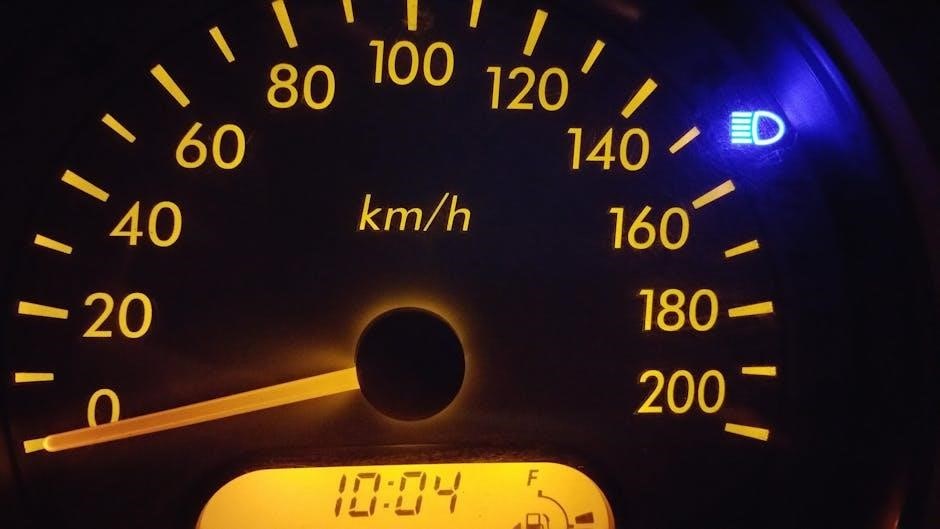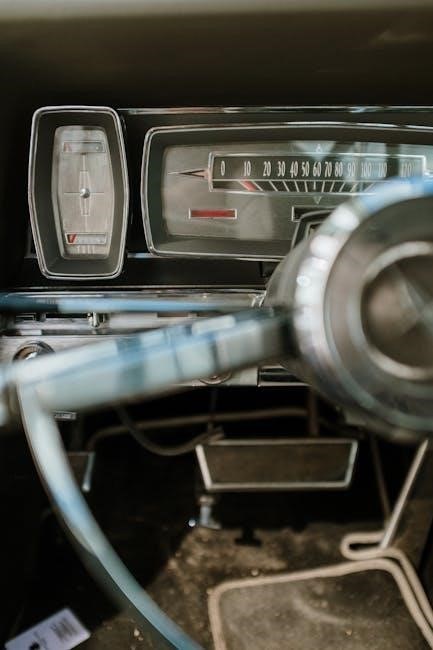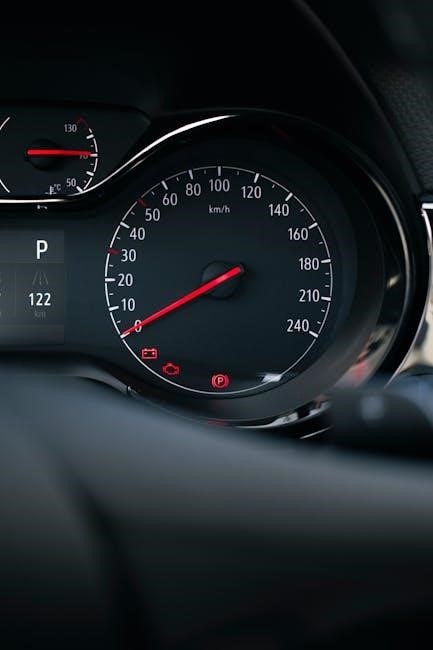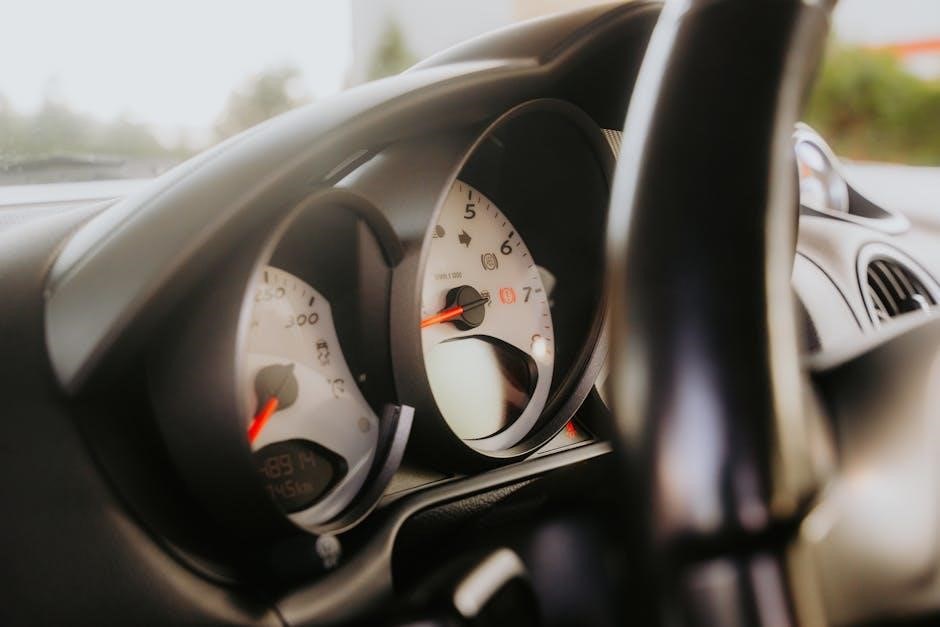A needle guide auto injector is a medical device designed to simplify injection processes, reducing anxiety and pain for patients. It ensures accurate needle placement and administration, making it a vital tool in modern healthcare for various treatments, including diabetes management and emergency medicine. Its user-friendly design and safety features enhance patient comfort and adherence to treatment regimens.
1.1 What is a Needle Guide Auto Injector?
A needle guide auto injector is a medical device designed to assist patients in administering injections accurately and safely. It features a mechanism that guides the needle into the correct position, reducing anxiety and pain. The device includes components like PTFE sliders and magnets to secure the needle, ensuring proper injection. Its ergonomic design and automated features make it user-friendly, particularly for those with limited dexterity or needle phobia, enhancing overall treatment adherence and patient comfort.
1.2 Applications of Needle Guide Auto Injector
The needle guide auto injector is widely used in diabetes management, emergency medicine, and veterinary care. It aids in administering insulin, epinephrine, and other medications with precision. The device is particularly beneficial for patients requiring frequent injections, reducing anxiety and improving accuracy. Its portability and ease of use make it ideal for home use, ensuring consistent treatment adherence and enhancing overall patient outcomes across various medical conditions.
1.3 Importance of Needle Guide Auto Injector in Modern Medicine
The needle guide auto injector plays a pivotal role in modern medicine by enhancing injection accuracy, reducing pain, and minimizing patient anxiety. Its ability to ensure precise needle placement improves drug delivery efficiency, making it indispensable for chronic conditions like diabetes and anaphylaxis. Additionally, it simplifies administration for patients, fostering better adherence to treatment regimens and improving overall health outcomes in both clinical and home settings.
History and Evolution of Auto Injectors
The history of auto injectors reflects advancements in design and functionality, reducing anxiety and improving safety for patients, making them essential in modern medicine over the years as innovative solutions.
2.1 Early Models of Auto Injectors
Early auto injectors were simple spring-based devices developed in the mid-20th century, primarily for military use to administer antidotes quickly; These rudimentary designs laid the groundwork for modern devices, incorporating needle guides for accuracy and safety. The focus was on functionality, with minimal ergonomic considerations. Over time, innovations in materials and mechanisms improved their reliability and user-friendliness, paving the way for the sophisticated auto injectors seen today.
2.2 Evolution of Needle Guidance Technology
Needle guidance technology has advanced significantly, from basic alignment tools to sophisticated systems using PTFE sliders and magnets for precise needle placement. Early models relied on manual adjustment, while modern designs incorporate automatic mechanisms to reduce human error. The integration of sensors and electronic systems has further enhanced accuracy, ensuring safer and more efficient injections. These innovations have addressed user anxiety and improved overall efficiency in medical procedures.

Key Components of a Needle Guide Auto Injector
The key components include the needle guide mechanism, automatic injection system, and safety features. These elements ensure precise delivery, minimize errors, and enhance user safety and convenience.
3.1 Needle Guide Mechanism
The needle guide mechanism ensures proper alignment and stabilization of the needle during injection. It helps maintain the correct angle and depth, reducing discomfort and improving accuracy. This feature is designed to minimize needle movement, ensuring consistent drug delivery. The mechanism typically includes a guidance system that locks in place once the needle is deployed, enhancing safety and reliability for users.
3.2 Automatic Injection System
The automatic injection system streamlines the injection process, minimizing user effort. It typically features a spring-loaded mechanism that triggers both needle deployment and drug delivery. This design reduces anxiety, especially for those fearful of needles. The system often includes a safety lock to prevent accidental activation and indicators to confirm successful injection, ensuring a safe and user-friendly experience.
3.3 Safety Features and Ergonomic Design
Safety features and ergonomic design are essential in needle guide auto injectors. Protective covers shield the needle, and retraction mechanisms minimize accidental exposure. The ergonomic design provides a comfortable grip, reducing fatigue and enhancing usability. Intuitive controls and clear indicators guide users through the injection process, ensuring safe and effective medication delivery. These features collectively improve user confidence and reduce errors, making the device accessible to a broader audience.

Types of Auto Injectors
Auto injectors are categorized into spring-based, gas-powered, and electronic models, each offering distinct mechanisms for needle guidance and drug delivery, catering to various user needs effectively.
4.1 Spring-Based Auto Injectors
Spring-based auto injectors utilize a spring mechanism to drive the needle and deliver medication. Once activated, the spring rapidly propels the needle into the skin, ensuring consistent drug delivery. These devices are known for their simplicity, reliability, and affordability. They are widely used in emergency situations due to their ease of use and minimal training requirements. Spring-based models are particularly popular for administering epinephrine and other urgent-care medications, making them a critical tool in first aid and healthcare settings.
4.2 Gas-Powered Auto Injectors
Gas-powered auto injectors use compressed gas to propel the needle and deliver medication. These devices offer fast and precise injections, making them ideal for critical-care situations. The gas-powered mechanism ensures consistent force, reducing variability in drug delivery. Their compact design and reliability make them popular in clinical settings. These injectors are often preferred for administering medications requiring rapid action, such as anesthetics or emergency drugs, enhancing patient outcomes in time-sensitive scenarios.
4.4 Electronic Auto Injectors
Electronic auto injectors utilize advanced microprocessors and sensors to deliver precise medication doses. They feature programmable settings, LCD screens, and audio-visual feedback, ensuring accurate and user-friendly operation. These devices often include Bluetooth connectivity for data tracking via mobile apps, enhancing adherence monitoring. With automated needle retraction and safety locks, they minimize risks and improve patient confidence. Their sleek design and intelligent features make them a preferred choice for modern healthcare needs.

Advantages of Using a Needle Guide Auto Injector
Needle guide auto injectors enhance injection accuracy, reduce needle anxiety, and improve safety. They simplify the process, ensuring proper technique and minimizing errors for users.
5.1 Reduced Anxiety and Pain
Needle guide auto injectors significantly minimize anxiety and pain by automating the injection process. The guided needle ensures accurate insertion, reducing discomfort and fear associated with manual injections. Patients experience less stress due to the device’s simplicity and consistency, making it ideal for those with needle phobia or sensitivity. This feature enhances overall user experience and adherence to treatment regimens.
5.2 Improved Accuracy and Safety
The needle guide auto injector enhances accuracy by ensuring the needle enters at the correct angle and depth, minimizing errors. Built-in sensors detect improper placement, preventing injection until correct alignment is achieved. This reduces risks of nerve or blood vessel damage. Additionally, visual or auditory feedback confirms successful injection, boosting user confidence and overall safety. These features make the device more reliable and user-friendly for patients of all skill levels.

How to Use a Needle Guide Auto Injector
Prepare the device, remove the cap, and place it firmly on the skin. Activate the injector, wait for the needle to retract, and dispose safely. Ensure proper technique and follow instructions carefully for effective use.
6.1 Step-by-Step Instructions
- Ensure the auto injector is prepared according to the manufacturer’s instructions.
- Remove the protective cap and firmly place the device against the injection site.
- Activate the injector by pressing the button or triggering the mechanism.
- Wait for the needle to retract automatically after injection.
- Dispose of the used device safely in a sharps container.
Always follow the provided guidelines for proper usage and safety.
6.2 Precautions and Safety Measures
Always handle the needle guide auto injector with care to avoid accidental activation. Ensure the needle is fully retracted after use to prevent injury. Store the device in a cool, dry place, out of reach of children. Follow the manufacturer’s guidelines for proper disposal. Avoid reusing the injector or altering its components. If a needlestick injury occurs, seek medical attention immediately. Adhere to all safety protocols to ensure safe and effective use.

Safety Features of Needle Guide Auto Injectors
Needle guide auto injectors feature automatic needle retraction and locking systems to prevent injuries; These mechanisms ensure safe handling and prevent accidental activation, enhancing user protection and safety.
7.1 Needle Retraction Mechanism
The needle retraction mechanism in auto injectors ensures the needle automatically withdraws after injection, preventing accidental exposure. This feature minimizes the risk of needlestick injuries and ensures user safety. Designed for smooth operation, it reduces needle exposure time, enhancing safety for both patients and healthcare providers. The mechanism is typically spring-loaded, ensuring rapid and reliable retraction, making it a critical component for safe and efficient drug delivery.
7.2 Automatic Locking System
The automatic locking system in needle guide auto injectors ensures the device cannot be reused, enhancing safety and preventing accidental needle exposure. Once activated, the mechanism locks the injector, making it inoperable and securely containing the needle. This feature prevents improper use and reduces the risk of cross-contamination or injury. It also ensures compliance with safety protocols, making it a vital component for user and patient protection.
Market Trends and Future of Auto Injectors
The auto injector market is expanding rapidly, driven by rising chronic diseases and technological innovations. Future trends include smart, connected devices and sustainable manufacturing, improving accessibility and affordability for patients.
8.1 Growing Demand for Auto Injectors
The demand for needle guide auto injectors is increasing due to the rising prevalence of chronic diseases like diabetes and rheumatoid arthritis. Patients increasingly prefer self-administration at home, driving market growth. Technological advancements in user-friendly designs and reliability further boost adoption. Additionally, the devices reduce needle-related anxiety and ensure proper technique, making them a preferred choice for both patients and healthcare providers.
8.2 Innovations in Needle Guide Technology
Recent advancements in needle guide technology have improved accuracy and usability. Innovations include enhanced guidance systems, automated depth control, and real-time feedback mechanisms. These developments minimize human error and optimize drug delivery. Additionally, integration with smart technology, such as AI-driven systems, enables better monitoring and personalized treatment. Such innovations are reshaping the future of medical injection systems, making them more efficient and patient-friendly.
Common Applications of Needle Guide Auto Injectors
Needle guide auto injectors are widely used in diabetes management, emergency medicine, and veterinary care, offering precise drug delivery, enhanced convenience, and reduced patient anxiety.
9.1 In Diabetes Management
Needle guide auto injectors are pivotal in diabetes management, enabling precise insulin delivery with minimal discomfort. Their ease of use and reduced pain make them ideal for patients with dexterity issues or needle phobia. The device ensures consistent dosing, improving glycemic control and adherence to treatment plans. This technology is particularly beneficial for patients requiring frequent injections, enhancing their overall quality of life and disease management.
9.2 In Emergency Medicine
Needle guide auto injectors play a critical role in emergency medicine by enabling rapid and accurate drug delivery. Their precision reduces administration errors, crucial in high-stress environments. These devices are often used for conditions like severe allergic reactions, where timely epinephrine delivery is vital. The user-friendly design minimizes training needs, making them accessible to both healthcare providers and laypersons, thereby improving emergency response and patient outcomes significantly.
9.3 In Veterinary Medicine
Needle guide auto injectors are increasingly used in veterinary medicine to ensure precise drug delivery in animals. They are commonly used for administering vaccines, antibiotics, and painkillers. The device minimizes stress for animals by reducing injection pain and discomfort. Veterinarians benefit from improved accuracy, while the automated mechanism reduces the risk of needlestick injuries, enhancing safety in clinical settings. This technology is particularly valuable for treating pets and livestock efficiently.

Patient Benefits and Satisfaction
Patients benefit from reduced anxiety and fear of needles due to the device’s ease of use and precise drug delivery, enhancing overall treatment satisfaction and adherence.
10.1 Ease of Use for Patients
The needle guide auto injector is designed with an intuitive interface, making it simple for patients to administer injections without extensive training; The device’s ergonomic design and clear visual cues ensure proper alignment and insertion, minimizing errors. This ease of use builds patient confidence and reduces the likelihood of administration errors, especially for those with limited dexterity or visual impairments. The streamlined process enhances overall patient experience and adherence to treatment regimens.
10.2 Reducing Fear of Needles
The needle guide auto injector helps alleviate the fear of needles by simplifying the injection process. Its automatic mechanism hides the needle during use, reducing anxiety. Patients feel more comfortable knowing the device controls the injection depth and speed, minimizing discomfort. This design not only reduces stress but also makes injections less intimidating, especially for those with needle phobia.

Cost and Accessibility of Auto Injectors
The cost of auto injectors varies, often higher than traditional methods. Improved insurance coverage and reimbursement policies enhance accessibility, making them more affordable for many patients needing them.
11.1 Cost Comparison with Traditional Injectors
Needle guide auto injectors are generally more expensive than traditional injectors due to their advanced features and technology. However, their convenience, accuracy, and safety often justify the higher cost. While traditional injectors may be cheaper upfront, auto injectors reduce long-term complications and improve efficiency, making them a cost-effective option for many patients requiring frequent injections.
11.2 Insurance Coverage and Reimbursement
Insurance coverage for needle guide auto injectors varies by provider and policy. Many insurance plans cover a significant portion of the cost, especially for medically necessary treatments. Reimbursement processes often require prior authorization and may depend on the patient’s condition. Out-of-pocket costs can differ, but some programs offer financial assistance to reduce expenses. Patients should consult their insurance provider for specific details.
Challenges and Limitations
Needle guide auto injectors face challenges like technical design complexity, high production costs, and limited customization for specific patient needs, affecting accessibility and affordability.
12.1 Technical Challenges in Design
Designing needle guide auto injectors poses challenges like ensuring precise needle alignment, miniaturizing components, and balancing durability with portability. Advanced materials and user-centric designs are critical to address these issues effectively while maintaining affordability and reliability for diverse medical applications.
12.2 High Cost of Advanced Models
The high cost of advanced needle guide auto injectors is driven by complex R&D, high-tech materials, and miniaturization. Manufacturing these devices requires precision engineering, increasing production expenses. Additionally, regulatory compliance and quality control further elevate costs. This makes advanced models less accessible to some patients, highlighting the need for cost-effective solutions without compromising safety and efficacy.

Regulatory and Compliance Issues
Strict testing and documentation are required for needle guide auto injectors to ensure safety and efficacy, adhering to regulatory standards and post-market surveillance requirements.
13.1 FDA Guidelines for Auto Injectors
The FDA imposes strict guidelines for needle guide auto injectors, including design validation, safety testing, and performance standards. Manufacturers must ensure devices meet human factors requirements, reducing use errors. Clinical trials must demonstrate efficacy and safety. Post-market surveillance is mandatory to monitor adverse events. Compliance with FDA regulations ensures patient safety and device reliability, aligning with federal standards for medical devices.
13.2 International Standards and Certifications
Needle guide auto injectors must comply with international standards like ISO 13485 for medical devices and IEC 60601 for electrical safety. Certifications such as CE marking in Europe and MDSAP ensure global market access. These standards mandate rigorous testing for safety, design, and performance, ensuring devices meet worldwide regulatory requirements and patient expectations, fostering trust and acceptance across borders.

Environmental Impact and Sustainability
Needle guide auto injectors contribute to sustainability through recyclable materials and reduced medical waste. Eco-friendly manufacturing processes minimize environmental impact, promoting greener healthcare solutions globally.
14.1 Recycling of Auto Injector Components
Recycling auto injector components reduces environmental impact by reusing materials like plastics, metals, and electronics. Many manufacturers offer take-back programs for proper disassembly and recycling, ensuring hazardous materials are safely processed. This promotes resource conservation and minimizes landfill waste. Recycling also aligns with global sustainability goals, encouraging responsible disposal of medical devices. Proper recycling protocols help maintain eco-friendly practices in healthcare.
14.2 Eco-Friendly Materials in Manufacturing
The use of eco-friendly materials in manufacturing needle guide auto injectors is increasingly prioritized to minimize environmental impact. Biodegradable plastics, recycled metals, and sustainable polymers are being incorporated to reduce carbon footprints. These materials not only lower production emissions but also make devices more recyclable. Additionally, manufacturers are adopting energy-efficient processes to further enhance sustainability. This shift supports global efforts to promote greener healthcare solutions and reduce waste effectively.
Needle guide auto injectors have revolutionized modern medicine by combining innovative technology with user-centric design, offering precise, safe, and efficient drug delivery solutions for diverse medical needs.
15.1 Summary of Key Points
Needle guide auto injectors combine advanced needle guidance technology with user-friendly designs, enhancing accuracy, safety, and patient comfort. They address the fear of needles, improve drug delivery efficiency, and cater to diverse medical conditions. Their evolution reflects innovation in healthcare, offering reliable solutions for patients and healthcare providers, while also emphasizing sustainability and cost-effectiveness in modern medicine.
15.2 Future Prospects and Development
The future of needle guide auto injectors lies in advancing technology integration, such as AI-driven systems for real-time monitoring and IoT connectivity for data sharing. Innovations in biocompatible materials and miniaturization will enhance portability and usability. Customizable designs for specific therapies and improved sustainability through recyclable components are expected to drive market growth, ensuring these devices remain vital in modern healthcare.




Leave a Reply
You must be logged in to post a comment.